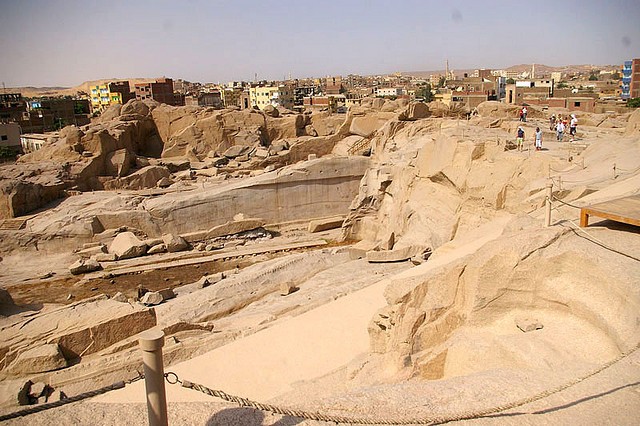An aerial view of the unfinished obelisk in Aswan unveils the immense scale of this ancient undertaking within a granite quarry that dates back over 3,500 years. Currently measuring 25 meters in length, this obelisk, if completed by the ancient Egyptians, would have towered at nearly 42 meters high and weighed over 1,160 tons, making it the largest obelisk ever attempted.
Historical Context
The unfinished obelisk provides insight into the monumental architecture of ancient Egypt, particularly during the time of the New Kingdom when large-scale construction projects were a hallmark of the civilization. The obelisk’s intended completion reflects the Egyptians’ ambition to create lasting symbols of their power and divine connection. Such structures were often dedicated to the gods and served as markers of significant historical events or royal achievements.

Techniques and Engineering
This monumental piece was left unfinished due to fissures that appeared in its upper section during the carving process. Despite its incomplete state, the obelisk is invaluable for understanding the techniques employed by the ancient Egyptians in quarrying and shaping these massive structures.

The quarry itself showcases various tools and methods used in the ancient world, such as the use of wooden wedges and the application of water to facilitate the separation of granite blocks. These methods illustrate the ingenuity and resourcefulness of the builders, who had to devise ways to manipulate heavy stone with limited technology.
Economic and Social Dynamics
Moreover, the unfinished state of this obelisk offers a unique glimpse into the economic and social dynamics of ancient Egypt. The scale of such projects required significant resources, labor, and organization, reflecting the complex society that existed at the time. The decision to abandon the obelisk due to structural issues might also indicate economic or political challenges faced by the builders, possibly linked to shifts in power or resources during the period.

Conclusion
Overall, the unfinished obelisk in Aswan stands as a significant archaeological and historical artifact, shedding light on the ancient Egyptian civilization’s monumental architecture and their remarkable ability to manipulate stone, even under challenging conditions. As such, it remains an essential site for both scholars and visitors interested in the grandeur of ancient Egyptian engineering and artistry. The unfinished obelisk not only represents the heights of architectural ambition but also the trials and tribulations of a civilization dedicated to leaving a lasting legacy.

